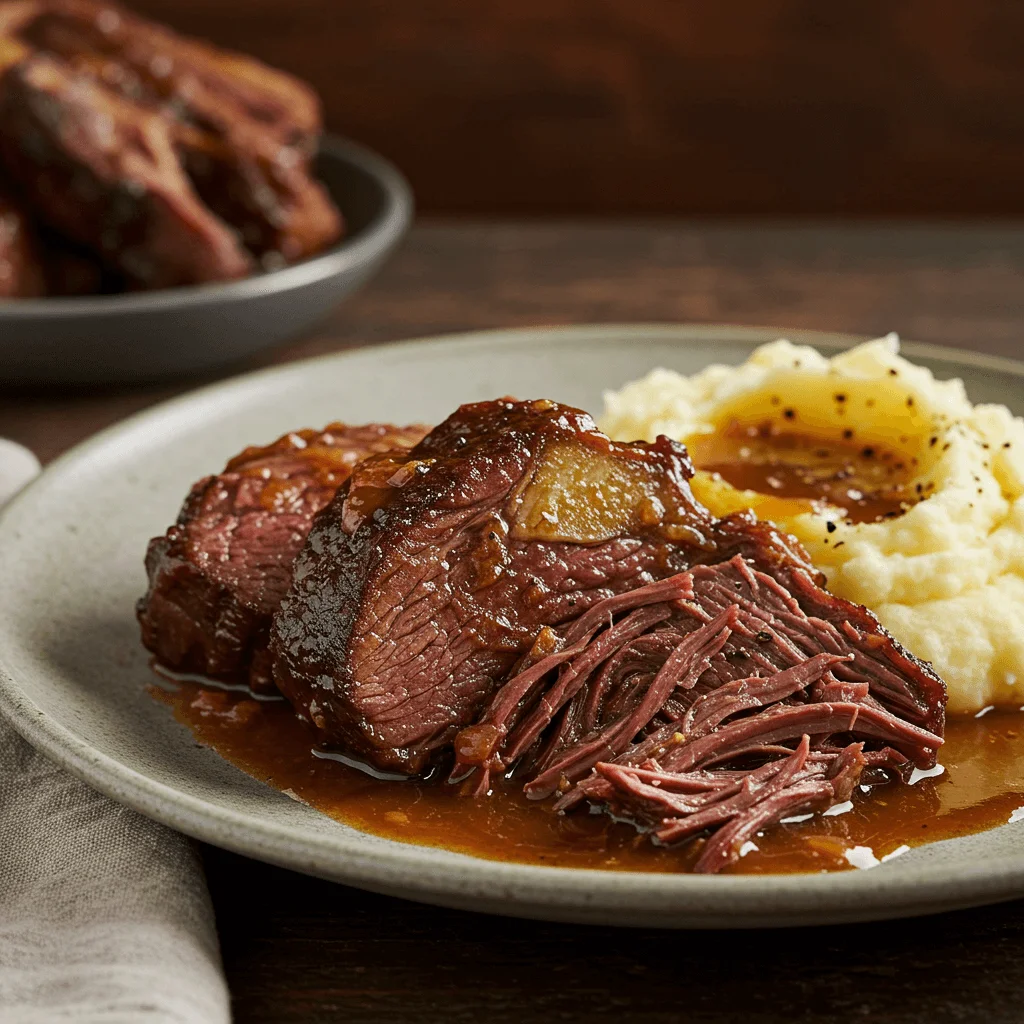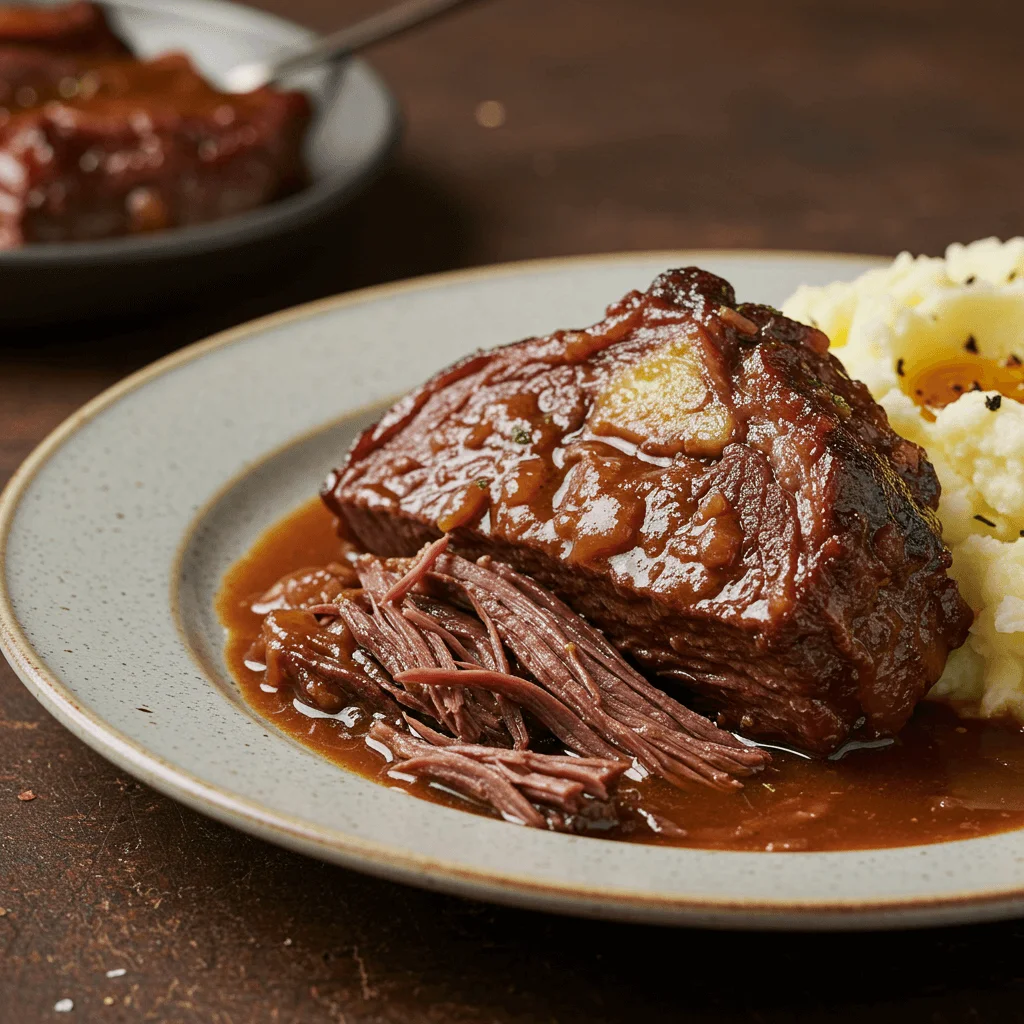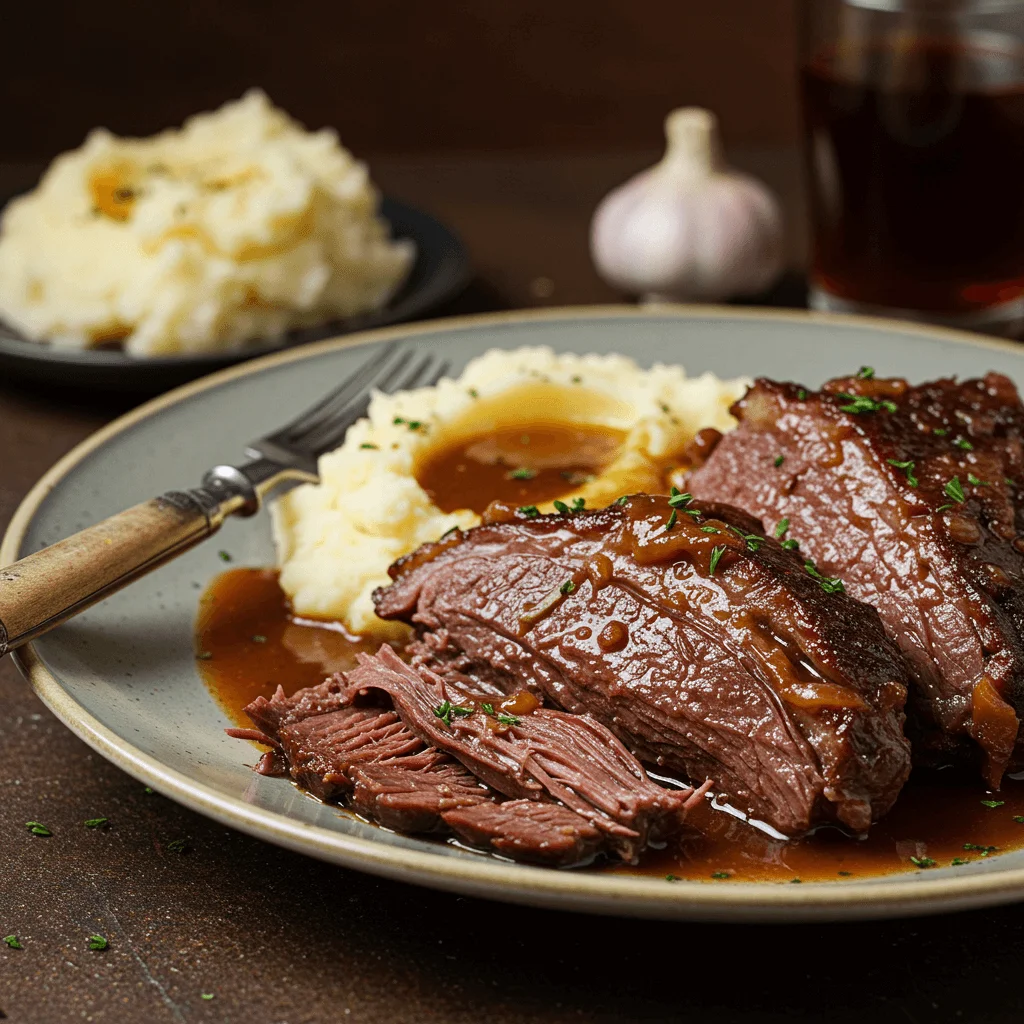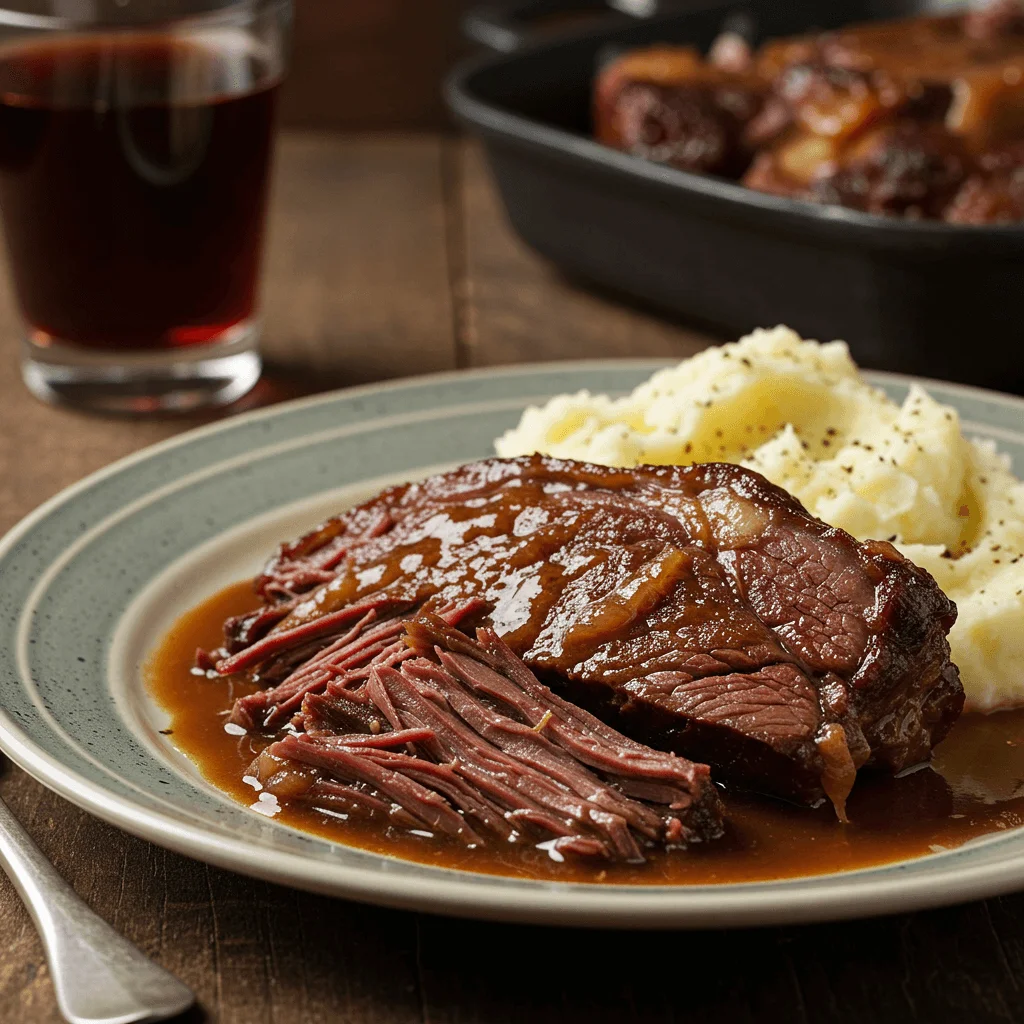Introduction
Beef cheek meat is a hidden gem in the culinary world, known for its rich flavour and melt-in-your-mouth tenderness. This cut comes from the facial muscles of the cow, which work continuously, making it a tough but collagen-rich meat. When cooked properly—especially using slow-cooking methods like braising, pressure cooking, or sous vide—it transforms into an incredibly tender and flavorful dish.
Despite being a lesser-known cut, beef cheek meat is highly prized by chefs and home cooks who appreciate its deep, beefy taste and versatility. Whether making a hearty stew, slow-cooked tacos, or a gourmet braised dish, beef cheeks offer a delicious and budget-friendly alternative to more common cuts. This guide explores the best ways to cook beef cheek meat to achieve perfect results every time.
What Is Beef Cheek Meat and Why Is It Special?

What Are Beef Cheeks?
Beef cheeks are the small, highly worked muscles on the sides of a cow’s face. Because these muscles are constantly used as the cow chews and grazes, they develop a dense texture and a high amount of connective tissue. Unlike tender cuts like ribeye or filet mignon, beef cheeks require slow and gentle cooking to break down the collagen and turn it into a melt-in-your-mouth dish.
Texture and Flavor Profile
Beef cheek meat is known for its unique combination of toughness when raw and incredible tenderness when cooked properly. The high collagen content gives it a rich, silky texture once slow-cooked, making it ideal for dishes that require long braising times. The flavour is intensely beefy, deeper than many other cuts, which makes it perfect for absorbing the flavours of braising liquids like red wine, beef stock, or aromatic herbs and spices.
A Butcher’s Secret Cut
Though beef cheeks are not as commonly found in standard grocery stores, they are highly prized by butchers and chefs for their affordability and depth of flavour. Many high-end restaurants use beef cheeks in gourmet dishes, thanks to their ability to create succulent, fall-apart textures when slow-cooked. Check with speciality butcher shops or online meat suppliers if you don’t see them in your local supermarket.
Why Choose Beef Cheeks?
- Budget-Friendly: Often more affordable than premium cuts but just as flavorful.
- Nutrient-rich: Packed with collagen, great for joint and skin health.
- Perfect for Slow Cooking: Whether braised in wine, slow-cooked in a stew, or pressure-cooked for a quicker meal, beef cheeks develop a soft, luscious texture.
- Great for Global Dishes: Used in everything from Italian ragù to Mexican barbacoa and French daube de bœuf.
In short, beef cheeks are an underrated but exceptional cut of beef that, when cooked with patience, rewards you with intense flavour and tenderness.
Why Cook Beef Cheek Meat?
Beef cheek meat is one of the most flavorful and tender cuts when cooked properly, making it a favourite among chefs and food enthusiasts. Though not as common as cuts like brisket or chuck, beef cheeks offer rich beefy flavour, melt-in-your-mouth texture, and nutritional benefits. You should consider adding beef cheek meat to your next meal.
1. Unmatched Tenderness When Slow-Cooked
Beef cheeks, with their naturally tough texture due to high collagen content, undergo a magical transformation when cooked low and slow. They turn into incredibly soft and succulent meat, a unique tenderness that is unmatched by any other cut. The slow braising process allows the collagen to break down, resulting in a rich, gelatinous texture that coats the meat and creates an ultra-juicy bite. Whether you use a slow cooker, Dutch oven, or sous vide method, the result is always fall-apart tenderness.
2. Deep, Intense Beefy Flavor
Unlike some leaner cuts, beef cheek meat boasts an intense beef flavour resulting from its dense muscle fibres and marbling. This makes it perfect for hearty, slow-cooked dishes where it can absorb bold flavours from aromatic herbs, wine, stock, and spices. Whether braised in a rich red wine sauce, simmered in a spicy Mexican barbacoa marinade, or slow-cooked in an Asian-inspired broth, beef cheeks elevate any dish with their robust and intense taste, inspiring you to experiment with new flavours and cuisines.
3. Budget-Friendly Alternative to Premium Cuts
If you’re a fan of slow-cooked beef short ribs, oxtail, or brisket but want a more affordable option, beef cheeks are a great choice. Despite their gourmet appeal, they are often cheaper than other braising cuts, making them a cost-effective way to prepare restaurant-quality meals at home. You get the same luxurious texture and flavour at a fraction of the price, giving you the confidence to cook gourmet meals without breaking the bank.
4. Nutrient-Rich and Collagen-Packed
Beef cheek meat is naturally high in collagen, which benefits skin, joints, and gut health. As the meat slowly cooks, the collagen transforms into gelatin, giving the dish a silky, luscious texture while providing essential nutrients. If you’re looking for a protein-rich, nutrient-dense meal, beef cheeks are an excellent choice.
5. Perfect for a Variety of Cuisines
Beef cheek meat is incredibly versatile and used in dishes worldwide:
- French Cuisine: Braised in red wine for a rich, decadent daube de bœuf.
- Mexican Cuisine: Slow-cooked for tender barbacoa, perfect for tacos and burritos.
- Italian Cuisine: Simmered in a tomato-based sauce for a hearty ragù.
- Asian Cuisine: Braised in soy sauce, ginger, and spices for a flavorful beef stew.
6. Easy to Prepare with Minimal Effort
While beef cheek meat requires long cooking times, the preparation is simple. Once seasoned and placed in a slow cooker, Dutch oven, or pressure cooker, it requires very little hands-on work. This makes it perfect for home cooks who want a gourmet-quality meal without complicated steps.
Final Thoughts
If you’re looking for a flavorful, budget-friendly, and nutrient-packed cut of beef, beef cheek meat is an excellent choice. With its rich taste, fork-tender texture, and versatility in various cuisines, it’s a must-try for anyone who loves slow-cooked comfort food. Whether you braise it in red wine, cook it sous vide, or shred it for tacos, beef cheeks are sure to impress!
Where to Buy and How to Prepare Beef Cheek Meat
Beef cheek meat is a speciality cut that may not always be available at your local supermarket, but it’s worth finding. Once you get your hands on it, proper preparation is key to unlocking its rich flavour and tender texture. Here’s where to buy beef cheeks and how to prepare them for the best cooking results.
Where to Buy Beef Cheek Meat
Since beef cheeks are less common than cuts like brisket or chuck, you may need to look beyond your regular grocery store. Here are some of the best places to source high-quality beef cheeks:
1. Local Butcher Shops
Butcher shops are one of the best places to find beef cheek meat. Many butchers can order it for you if they don’t have it readily available. When buying from a butcher, ask for well-trimmed beef cheeks to save time during preparation.
2. Specialty Meat Markets and Gourmet Stores
Some high-end grocery stores and speciality meat markets carry beef cheeks, especially those focusing on grass-fed, organic, or gourmet meats. If your local store doesn’t stock them, they may be able to place a special order.
3. Online Meat Suppliers
Many online butchers and meat suppliers sell beef cheeks and deliver them frozen or fresh. Websites specializing in high-quality, pasture-raised meats often have beef cheeks available. Some popular online retailers include:
- Crowd Cow
- Snake River Farms
- US Wellness Meats
- Local farm delivery services
4. Wholesale or Restaurant Suppliers
If you want to buy in bulk, restaurant supply stores or wholesale meat distributors may have beef cheeks available at a better price per pound. Some suppliers sell to the public or offer membership programs.
5. Farmers’ Markets
Local farmers’ markets with meat vendors sometimes carry beef cheeks, especially if they specialize in grass-fed beef. This option is great if you prefer high-quality, locally sourced-meat.
How to Prepare Beef Cheek Meat
Before cooking, beef cheeks need a bit of preparation to ensure they turn out tender and flavorful. Here’s a step-by-step guide to getting them ready:
1. Trimming the Excess Fat and Silver Skin
Beef cheeks often come with a layer of silver skin (a tough connective tissue) and some excess fat. While a little fat is good for flavour, the silver skin must be removed since it won’t break down during cooking.
- Use a sharp knife to trim away the silver skin carefully.
- Remove large pieces of excess fat, but leave a thin layer to enhance the meat’s juiciness.
2. Portioning (Optional)
Some beef cheeks are quite large, and depending on your recipe, you may want to cut them into smaller portions for even cooking. If braising or slow-cooking, you can leave them whole, but for stews or tacos, cutting them into chunks speeds up cooking time.
3. Marinating or Seasoning
Since beef cheeks are a dense, collagen-rich cut, marinating them can help enhance their flavour and tenderize the meat. Here are a few options:
- Classic Red Wine Marinade: Red wine, garlic, rosemary, and black pepper (great for braising).
- Mexican-style marinade: Lime juice, cumin, smoked paprika, garlic, and oregano (ideal for barbacoa).
- Asian-Style Marinade: Soy sauce, ginger, garlic, star anise, and honey (perfect for slow-braised beef cheeks).
If you’re short on time, simply seasoning them with salt and pepper before searing will yield delicious results.
4. Searing for Maximum Flavor
Before slow-cooking or braising, searing the beef cheeks creates a flavorful crust. This step enhances the final dish by adding a depth of caramelized flavour.
- Heat a heavy-bottomed pan or Dutch oven over medium-high heat.
- Add some oil and sear the beef cheeks on all sides until browned.
- Remove from the pan and proceed with your recipe, whether braising, slow cooking, or pressure cooking.
Final Thoughts
Finding and preparing beef cheek meat may take extra effort, but the results are well worth it. Whether sourced from a butcher, speciality market, or online supplier, high-quality beef cheeks provide an incredible depth of flavour and tenderness when cooked properly. Taking the time to trim, season, and sear the meat before slow-cooking ensures a restaurant-quality dish every time.
Best Ways to Cook Beef Cheek Meat

Slow Cooking for Ultimate Tenderness
Beef cheek meat is naturally tough due to its high collagen content, but slow cooking transforms it into an incredibly tender and flavorful dish. The key to perfect beef cheeks is patience—low and slow cooking allows the connective tissue to break down, resulting in meat that is fork-tender and packed with rich, beefy goodness. The slow-cooking method ensures the best texture and taste, whether you use a slow cooker, Dutch oven, or pressure cooker.
Why Slow Cooking Works Best for Beef Cheek Meat
1. Collagen Breakdown Creates a Silky Texture
Beef cheeks are loaded with connective tissue and collagen, which make them tough when raw. However, the collagen gradually breaks into gelatin when exposed to low, consistent heat over several hours. This process produces an ultra-tender texture and a rich, velvety mouthfeel that enhances the dish.
2. Maximum Flavor Infusion
Slow cooking allows beef cheeks to absorb the flavours of herbs, spices, and braising liquids like wine, broth, or sauce. As the meat gently simmers, it becomes deeply infused with the surrounding flavours, creating a dish that is rich and complex in taste.
3. Hands-Off Cooking with Minimal Effort
Once the beef cheeks are prepared and placed in a slow cooker or Dutch oven, very little work is required. Slow cooking is a set-it-and-forget-it method, unlike pan-searing or grilling, which need constant attention. This makes it ideal for busy home cooks who want gourmet results with minimal effort.
Best Slow Cooking Methods for Beef Cheek Meat
1. Slow Cooker (Crockpot) Method
A slow cooker is one of the easiest ways to cook beef cheeks. It maintains a consistently low temperature, allowing the meat to break down gently over several hours.
How to Cook Beef Cheeks in a Slow Cooker:
- Sear the beef cheeks: Heat a pan over medium-high heat, add some oil, and brown the beef cheeks on all sides. This step enhances the flavour.
- Prepare the braising liquid: In the slow cooker, add ingredients like beef broth, red wine, diced onions, garlic, and herbs (such as thyme and rosemary).
- Add the beef cheeks: Place the seared meat in the slow cooker, ensuring it’s mostly submerged in the liquid.
- Set the temperature: Cook on low for 6–8 hours or high for 4–5 hours until the meat is fork-tender.
- Shred or serve whole: The beef cheeks can be pulled apart easily with a fork or served in large, tender pieces.
Best for: Barbacoa, tacos, shredded beef sandwiches, and hearty stews.
2. Dutch Oven (Oven-Braised) Method
A Dutch oven is perfect for slow-cooking beef cheeks, as it retains heat well and evenly distributes it throughout cooking. Braising in the oven allows the meat to develop a rich, caramelized crust while absorbing deep flavours from the cooking liquid.
How to Cook Beef Cheeks in a Dutch Oven:
- Preheat the oven: Set the temperature to 300°F (150°C).
- Sear the beef cheeks: Brown them in the Dutch oven with oil over medium-high heat. Remove and set aside.
- Sauté aromatics: Cook onions, carrots, and garlic in the same pot until softened.
- Deglaze the pan: Pour in red wine, beef stock, or tomato-based sauce, scraping up any browned bits for extra flavour.
- Add beef cheeks and simmer: Return the beef cheeks to the pot, cover with a lid, and place in the oven.
- Braise for 3–4 hours: Check occasionally, and turn the meat halfway through cooking. It’s ready when the beef is tender enough to shred with a fork.
Best for: Classic French-style braised beef cheeks, Italian ragù, and gourmet dinner plates.
3. Pressure Cooker (Instant Pot) Method
A pressure cooker can significantly speed up the slow-cooking process for those who are short on time while still delivering tender, flavorful results.
How to Cook Beef Cheeks in a Pressure Cooker:
- Sear the beef cheeks using the sauté function.
- Add aromatics and liquid, such as onions, garlic, red wine, and beef broth.
- Set to high pressure and cook for 60–75 minutes.
- Natural release for 15 minutes before opening the lid.
- Shred or slice the beef cheeks and serve with the reduced sauce.
Best for: Quick meals, meal prepping, and restaurant-style dishes in less time.
Pro Tips for Perfect Slow-Cooked Beef Cheeks
- Use the Right Cooking Liquid: Beef broth, red wine, or tomato-based sauces enhance flavour and moisten the meat.
- Don’t Skip the Sear: Browning the meat before slow cooking adds depth and enhances the final taste.
- Cook Low and Slow: Rushing the process can result in chewy beef. Let it cook gently for best results.
- Let the Meat Rest: After cooking, allow the beef cheeks to rest for 10–15 minutes before shredding or slicing. This helps retain juices and improves texture.
- Reduce the Sauce: If your sauce is too thin after slow cooking, simmer it on the stove to concentrate the flavours.
Final Thoughts
Slow cooking is the ultimate way to unlock the full potential of beef cheek meat. Whether you choose a slow cooker, Dutch oven, or pressure cooker, the result is a deeply flavorful, fork-tender dish that melts in your mouth. You can transform this underrated cut into a gourmet masterpiece with patience and the right technique!
Pressure Cooking for a Quick Meal
Pressure cooking is a game-changer when you’re craving tender, flavorful beef cheek meat but don’t have the luxury of hours to slow cook it. A pressure cooker, like an Instant Pot, is designed to cook food at high pressure, significantly reducing cooking time while maintaining moisture and flavour. This method works exceptionally well for beef cheek meat, known for being tough and requiring long cooking times to achieve tenderness. Pressure cooking locks in flavours, tenderizes the meat, and produces a rich dish in a fraction of the time compared to traditional slow-cooking methods.
Why Pressure Cooking is Ideal for Beef Cheek Meat
1. Tenderness in a Fraction of the Time
Beef cheek meat is tough and fibrous, but pressure cooking rapidly breaks down the connective tissues and collagen that cause toughness. The collagen breaks down in just 60 to 75 minutes at high pressure, transforming the meat into a soft, melt-in-your-mouth texture. This method eliminates the need for hours of slow cooking, making it perfect for a quick weeknight meal or when you’re pressed for time.
2. Flavor Retention
Pressure cooking preserves the natural flavours of the beef cheeks and enhances them by infusing the meat with the spices and liquids in the pot. Because the Cooker is sealed, steam and flavours are trapped inside, allowing the beef cheeks to absorb all the aromatic ingredients—broth, red wine, garlic, onions, or herbs—while maintaining moisture. This results in a rich, flavorful dish that doesn’t require constant supervision.
3. Energy and Time Efficiency
Using a pressure cooker saves you not only time but also energy. Because the pot operates under high pressure, it cooks faster and requires less energy than traditional methods such as oven-braising or slow-cooking. The sealed environment traps heat, making it an energy-efficient way to prepare a hearty meal in a fraction of the time.
How to Pressure Cook Beef Cheek Meat
Step-by-Step Pressure Cooking Process
1. Prep the Beef Cheeks
Before pressure cooking, it’s essential to prepare the beef cheeks by trimming excess fat or connective tissue. This ensures that the dish remains rich without being overly greasy. Season the meat generously with salt, pepper, and spices. Some common seasonings include garlic, thyme, rosemary, paprika, or cumin.
2. Sear the Beef Cheeks (Optional but Recommended)
While pressure cooking eliminates the need for long cooking times, searing the beef cheeks beforehand adds a layer of flavour that enhances the overall dish. Heat a little oil in the pressure cooker and brown the beef cheeks on all sides. This step helps caramelize the meat’s surface and release a savoury flavour.
3. Add Aromatics and Braising Liquid
Once the beef cheeks are seared, add aromatics like onions, garlic, carrots, and celery to the pot. Then, pour in your preferred braising liquid—beef broth, red wine, or a combination. The liquid is essential for creating the steam for the pressure cooking process. Don’t forget to scrape up any browned bits from the bottom of the pot, as they are packed with flavour.
4. Set the Pressure Cooker
Seal the lid on the pressure cooker and set it to high pressure. For beef cheeks, the cooking time will typically range between 60 to 75 minutes. After cooking, allow the pressure to naturally release for 10 to 15 minutes, which helps the meat maintain its juiciness.
5. Shred or Slice the Beef Cheeks
Once the pressure is released, carefully open the lid and check the meat for tenderness. If the beef is fork-tender, it can be shredded or sliced. Shredding the meat is a great option for making tacos, sandwiches, or stews. If you prefer to serve it whole, the meat will have a beautifully tender texture, perfect for a high-end dinner dish.
Pressure Cooking Tips for Perfect Beef Cheeks
- Use enough liquid: Since pressure cooking uses steam, it’s essential to have enough liquid in the pot. Ensure the liquid covers at least half the beef cheeks to create steam and prevent the meat from drying out.
- Layer your aromatics: Layering the vegetables, herbs, and spices around the meat ensures the flavours are evenly distributed during cooking. You can even use a bouquet garni or a spice bag for easy cleanup.
- Test for tenderness: After the cooking time is up, check the beef cheeks by pressing them with a fork. They are ready to be served if they are tender and easily fall apart. If not, seal the lid and cook for 10–15 minutes under high pressure.
Final Thoughts on Pressure Cooking Beef Cheeks
Pressure cooking is an excellent method for transforming tough beef cheek meat into a tender, flavorful dish in record time. With a few simple steps and the right ingredients, you can create a delicious meal without the hours of preparation and cooking typically required. It’s the perfect solution for busy weeknights or whenever you want to enjoy a rich, gourmet meal in less than two hours. Whether you’re cooking a hearty stew, flavorful tacos, or a savoury braise, pressure cooking will give you the desired results with minimal effort.
Sous Vide for Precision Cooking

Sous vide, a French term meaning “under vacuum,” is a cooking technique that involves placing food in a vacuum-sealed bag and cooking it in a water bath at a precisely controlled temperature. This method has gained popularity for its ability to produce perfect, restaurant-quality results, especially for cuts of meat like beef cheeks. The sous vide process allows for precise temperature control, ensuring that beef cheek meat is cooked to the exact level of tenderness you desire without the risk of overcooking.
Why Sous Vide Works Perfectly for Beef Cheek Meat
1. Unmatched Precision and Consistency
Sous vide is ideal for cooking beef cheek meat because it allows consistent results. Since the meat is cooked in a water bath at a controlled temperature, you can ensure the beef cheeks reach the perfect level of tenderness without any guesswork. Whether you like your beef cheeks medium or fall-apart tender, sous vide provides accuracy that traditional braising or roasting cannot match.
2. No Overcooking
One of the biggest advantages of sous vide is that the meat cannot be overcooked. Unlike stovetop or oven cooking, where the temperature can fluctuate, sous vide ensures that the beef cheeks are cooked at a constant, low temperature throughout the cooking process. This means you can cook your beef cheeks to the perfect level of doneness without worrying about them drying out or becoming too tough.
3. Retained Juices and Flavor
Sous vide cooking keeps the beef cheeks in a vacuum-sealed bag, which locks in all the natural juices and flavours. This prevents the meat from losing moisture, ensuring every bite is juicy and tender. The meat fully absorbs the flavours from any seasonings, marinades, or aromatics used in the bag, resulting in a rich and succulent dish.
How to Sous Vide Beef Cheeks
Step-by-Step Sous Vide Process
1. Prepare the Beef Cheeks
Before sous vide cooking, trim any excess fat or silver skin from the beef cheeks. Season the meat with salt, pepper, and desired spices or herbs. Some great seasoning options include garlic, thyme, rosemary, or paprika. If you prefer, you can marinate the beef cheeks overnight for extra flavour.
2. Vacuum Seal the Beef Cheeks
Place the seasoned beef cheeks into a vacuum-seal bag. If you don’t have a vacuum sealer, using the water displacement method, a zip-top bag with the air removed will also work. Ensure the bag is sealed tightly to prevent water from entering and compromising the cooking process.
3. Set Up the Sous Vide Water Bath
Fill a large container or pot with water and attach your sous vide immersion circulator. Set the temperature to 185°F (85°C) for a tender result with a slight chew or 170°F (77°C) for an ultra-tender, melt-in-your-mouth texture. The exact temperature can vary depending on your preferred doneness, but beef cheek meat typically benefits from the higher temperatures in sous vide cooking.
4. Cook the Beef Cheeks
Submerge the vacuum-sealed bag with the beef cheeks into the water bath. Ensure the bag is fully submerged, with no air pockets left inside. Cook the beef cheeks for 24 to 48 hours, depending on how tender and flavorful you want the final dish to be. The longer you cook the beef cheeks, the more they break down, resulting in a more tender texture.
5. Finish the Beef Cheeks
Once the cooking time is complete, remove the beef cheeks from the bag and carefully pat them dry with paper towels. If you prefer a crispy exterior, quickly sear the beef cheeks in a hot pan with a little oil for 1–2 minutes on each side. This adds a beautiful caramelized crust while keeping the inside juicy and tender.
Why Sous Vide is the Best Method for Beef Cheeks
1. Perfect Texture Every Time
Sous vide eliminates the risk of overcooking or undercooking beef cheek meat. Since the meat cooks at a precise temperature, it consistently achieves the desired level of tenderness without any guesswork. Whether you prefer a more steak-like texture or something that is fall-apart tender, sous vide gives you the power to fine-tune the results.
2. Enhanced Flavor Profile
The vacuum-sealed environment of sous vide cooking allows the beef cheek meat to absorb all the flavours from seasonings, marinades, and aromatic ingredients, resulting in a rich and deep dish. The flavours are infused deeply into the meat during the long cooking process, creating a deliciously flavorful bite every time.
3. Time Flexibility
Another advantage of sous vide is its time flexibility. You can cook beef cheeks for a range of hours, from 24 hours for a firmer, sliceable texture to 48 hours for ultra-tender meat. If you need to cook the beef cheeks in advance, the sous vide method allows for greater flexibility. You can cook the meat ahead of time and store it in the fridge until you’re ready to finish and serve it.
Sous Vide Tips for Perfect Beef Cheeks
- Use Aromatics in the Bag: Add herbs, garlic, onions, or citrus for extra flavour. The vacuum-sealed bag locks in these aromas, giving your beef cheeks a depth of flavour.
- Searing is Optional: While searing is unnecessary, it adds a beautiful crust and enhances the overall presentation and flavour of the beef cheeks.
- Don’t Rush the Process: Sous vide cooking takes time, but the results are well worth the wait. The slow cooking allows the meat to break down and become incredibly tender.
- Double Vacuum Seal for Safety: To avoid leaks during cooking, consider double-sealing your bag, especially if it’s a larger cut of meat.
Final Thoughts on Sous Vide for Beef Cheeks
Sous vide is the ultimate method for achieving perfect, tender beef cheek meat. By offering precision and consistency, this technique allows you to cook the meat exactly to your liking while retaining all its natural flavours and moisture. Whether you prefer your beef cheeks fork-tender or with a bit more bite, sous vide ensures you get the ideal texture every time, making it an excellent choice for beef cheeks and other tougher cuts of meat.
Conclusion
In conclusion, beef cheek meat is a versatile and flavorful cut that offers a range of cooking methods to suit your needs. Whether you choose the slow-cooked tenderness of braising, the quick and efficient results of pressure cooking, the precision of sous vide, or the ease of slow cooking in a crockpot, each method brings out this hearty meat’s unique flavours and textures.
To take your beef cheeks to the next level, don’t forget to experiment with marinades or spices. Marinating the meat before cooking or adding aromatic herbs and spices can infuse the beef with deeper, more complex flavours. The possibilities are endless, whether you prefer a bold combination of garlic, rosemary, and thyme or a sweet and spicy marinade.

